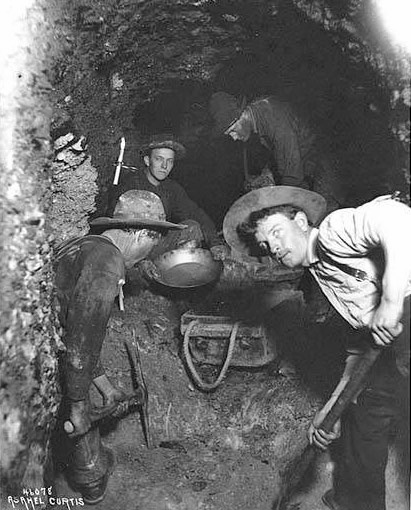On August 16, 1896, the first gold was discovered in the Klondike region of Yukon, Canada. American George Carmack and Tagish First Nation members “Skookum” Jim Mason and Dawson Charlie found gold nuggets in Rabbit Creek (later renamed Bonanza Creek). Their discovery kicked off the Klondike Gold Rush, prompting thousands of people to migrate to Yukon to find their fortune.
While Carmack is officially recognized as the discoverer, historians still debate the whole story. Rumors suggested Skookum Jim was the one to pan the creek. Some of Charlie’s family later hinted that one saw the glimmer and pointed it out to Jim. The group might’ve been worried that the government would refuse a claim from an Indigenous person, so they agreed to have Carmack take the credit.
The men’s search was driven by a tip from Canadian prospector Robert Henderson (who also has supporters saying he should’ve owned the claim). Unlike in other gold-rich regions, Klondike prospectors openly shared information. The news of the discovery, however, was not confined to the local communities. In the summer of 1897, it reached the rest of the world, thanks to the power of newspapers. Their quick reporting and wide reach inspired thousands of hopeful prospectors to journey to Yukon.
Of an estimated 100,000 migrants, only 30,000-40,000 made it to the Klondike. Hardly any managed to find gold; the few people who found their fortunes did so as entrepreneurs in the mining towns. When word came of gold being discovered in Nome, Alaska in 1899, prospectors abandoned the Klondike to migrate there. The Klondike Gold Rush, though short-lived, had a profound and lasting impact on the region and its people, shaping their lives and the landscape of the area.

